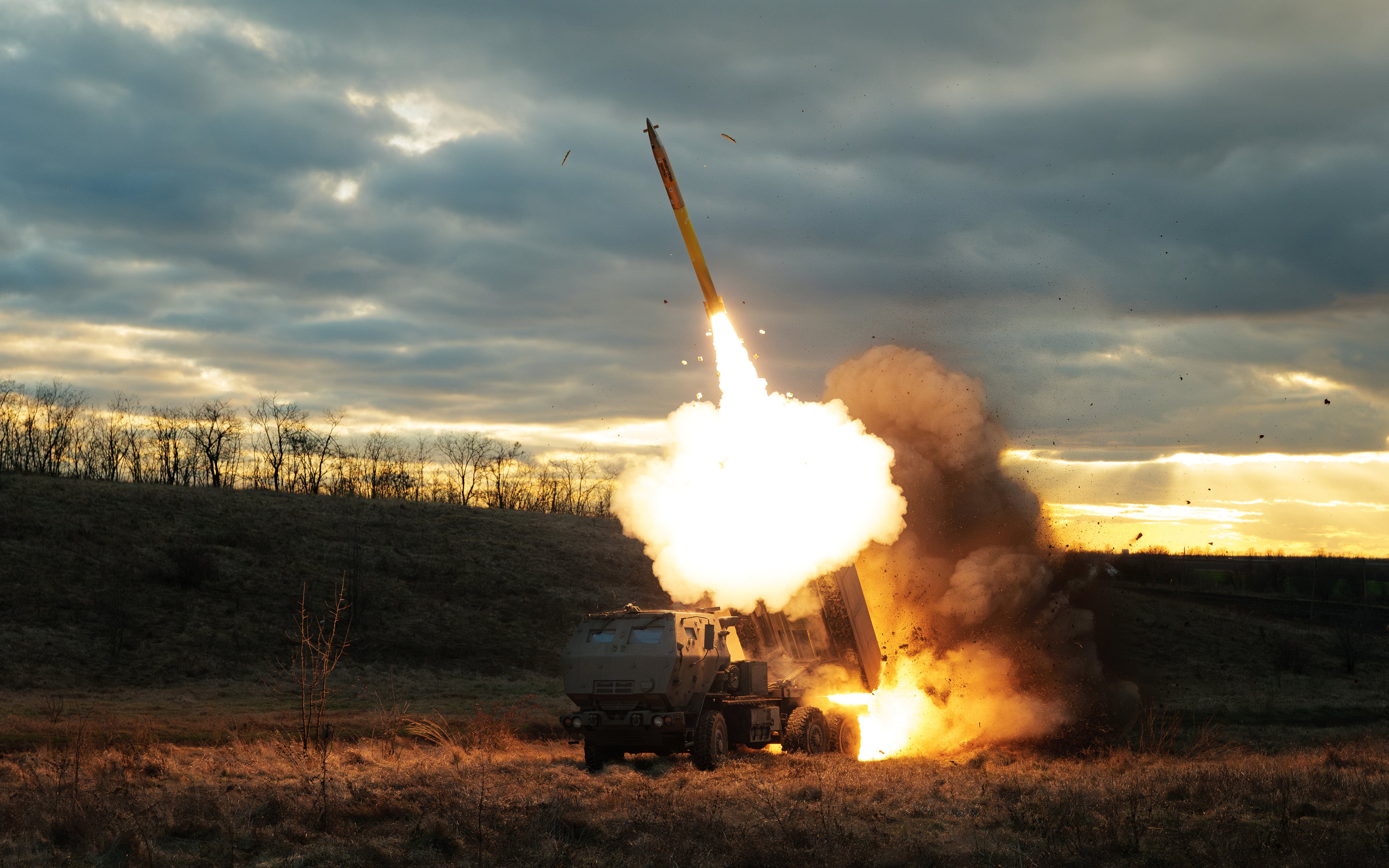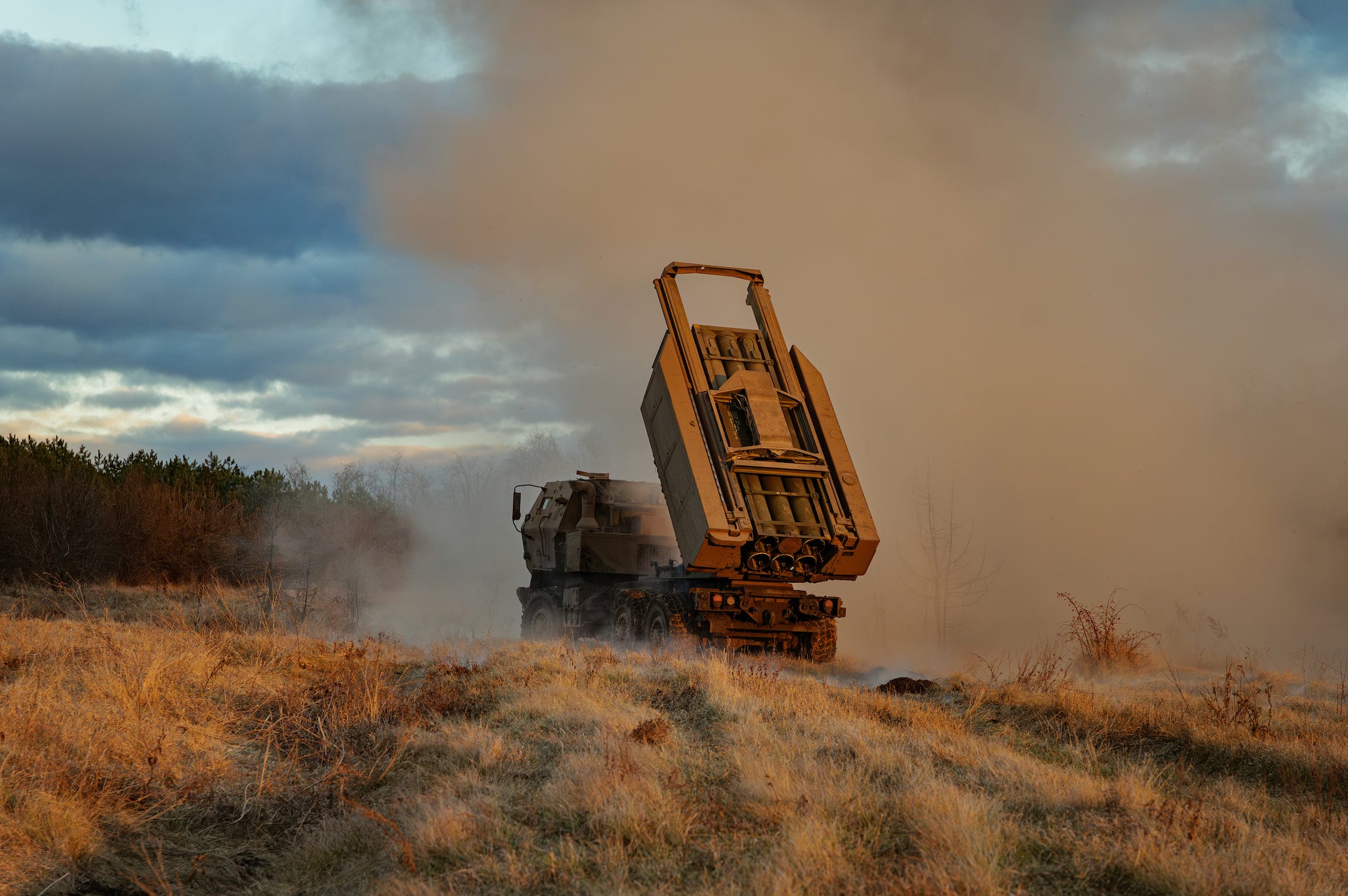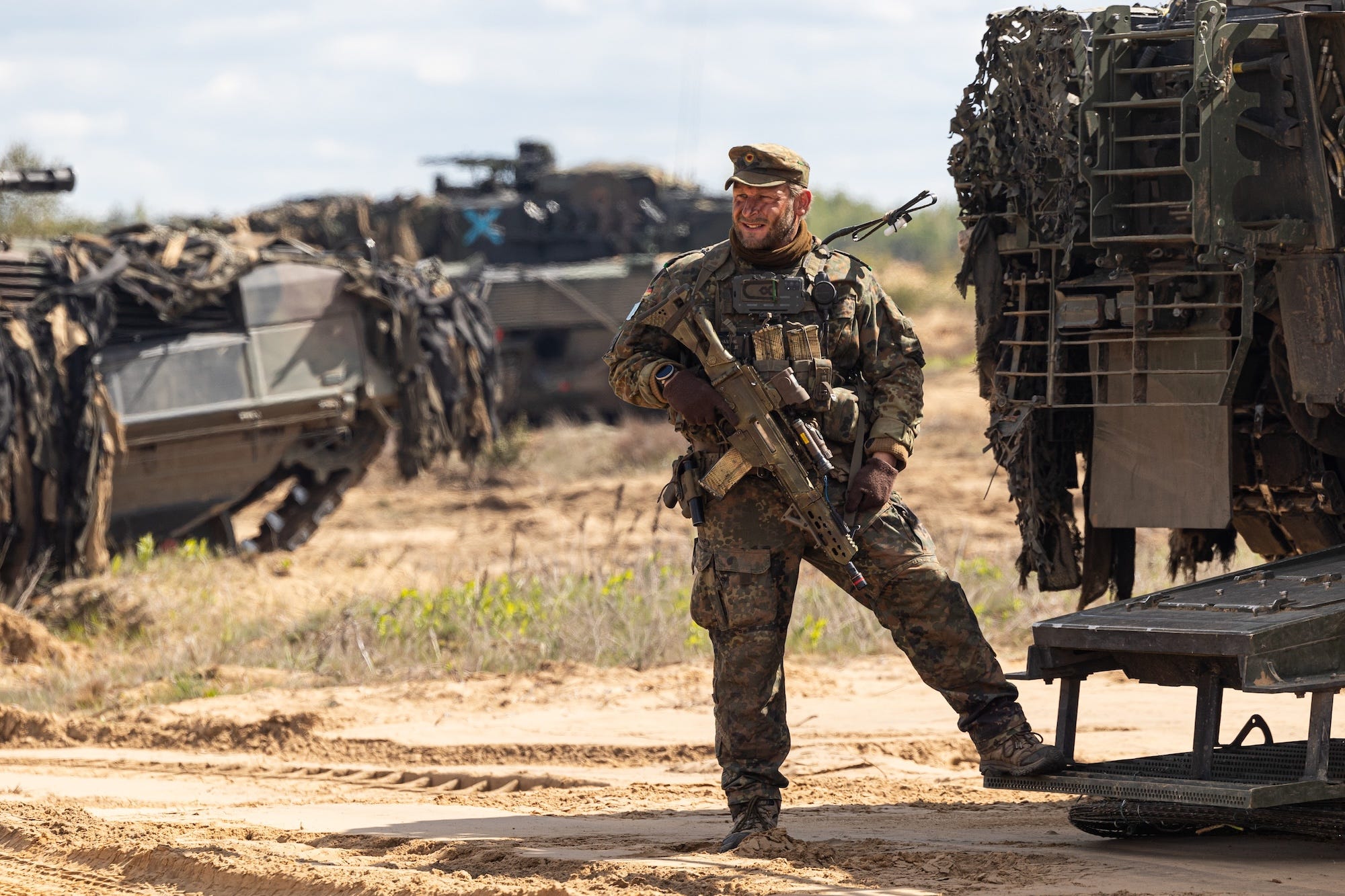
Serhii Mykhalchuk/Global Images Ukraine via Getty Images
NATO allies sharing a border with Russia are turning to the US-made High Mobility Artillery Rocket System as they arm themselves for the possibility of Russian aggression.
The HIMARS, made by US defense giant Lockheed Martin, is a multiple rocket launcher. Ukraine has been using it as part of its fight against Russia’s invasion. Though a game changer when first introduced, the system’s effectiveness has diminished. Still, it’s considered a necessary capability by Russia’s neighbors.
The three Baltic countries are concerned that Russia could attack them next after Ukraine. Boosting their defenses, they have selected the HIMARS as a key weapon.
Estonia received six HIMARS in April, Latvia has an agreement with the US for six of the systems, expected by 2027, and Lithuania is purchasing eight of them, with the first deliveries expected this year.
These countries see the deep strike capability as critical based on watching Ukraine. Hanno Pevkur, Estonia’s defense minister, explained to Business Insider that his country believes the combat-tested HIMARS send a “deterrence message” to Russia.
“We have the long strike capability, deep strike capability in Estonia already today,” he said.
Ukraine shows the need
Beyond lessons on the importance of maintaining robust air defenses, deep ammunition stockpiles, and strong electronic warfare capabilities, the war in Ukraine has shown that the ability to strike deep behind enemy lines or into hostile territory is essential, Pevkur said. The HIMARS deliver that capability.
When Ukraine first received HIMARS from the US, Russian ammo depots, command and control centers, and more that had been out of reach of Ukrainian artillery were suddenly vulnerable. The Guided Multiple Launch Rocket System had the reach needed to strike critical Russian targets. These surface-to-surface rockets have a range of around 70 kilometers, and Ukraine put them to use battering tactically significant Russian targets.
Specifically, Ukraine has used the weapons to strike Russian troops, ammunition depots, and aircraft.
Ukraine later received Army Tactical Missile Systems with significantly longer range but was initially barred from striking into Russia, leaving Russian forces free to mass troops and weaponry in a safe haven. By the time those restrictions were lifted, Ukraine lacked a sufficient supply of them to properly prosecute Russian targets using those missiles.
Ukraine’s deep strike campaign has largely depended on homemade drones and anti-ship missiles modified for land attack. The HIMARS served Ukraine well but had far greater potential. In a war with Russia, NATO allies wouldn’t have to fight with one hand tied behind their backs as Ukraine often has and would be able to use the weapon as intended.
HIMARS were among the first big weapons the West trusted Ukraine to receive. Their effective use in battle opened the door to more substantial military aid, including armored fighting vehicles, tanks, and even fighter aircraft like American-made F-16s and French Mirages.

Photo by Serhii Mykhalchuk/Global Images Ukraine via Getty Images
HIMARS have become less effective in Ukraine over time as Russia’s electronic warfare capabilities have improved. But Justin Bronk, a warfare expert at RUSI, told BI earlier this year that the weapon was “still an important part of the Ukrainian capabilities.”
Ukraine often hasn’t had the launcher or ammunition numbers it needs to be as effective as it could be, an issue complicated by US flip-flopping on support, but the value is nonetheless clear, which explains interest from the Baltic nations.
Ukraine’s international partners are watching the war closely to see not just what Ukraine needs, but what they need, in terms of tactics and weaponry, to be ready for a possible war with Russia.
Protecting NATO
The Baltic countries are among the most vocal countries in Europe about the Russian threat given their proximity, but they are not alone. A host of nations, including the UK, Germany, France, Finland, and Denmark, have all warned that Russia could attack.
Former CIA director David Petraeus warned earlier this year that Lithuania is the most likely NATO country to be invaded.
NATO’s collective defense clause means that an attack on any one country is an attack on the alliance. A Russian invasion of an alliance member could quickly spiral into a major conflict.
Allies have invested resources like troops and weaponry in those front-line countries, with the head of NATO calling them and neighboring Poland “a first line of defense” in May. A Russian advance would ideally be stopped there, but those countries may only be able to slow it down.

Paulius Peleckis/Getty Images
Pevkur said it’s important for all of NATO to help the region: “The eastern flank is the front door of NATO, so we need to keep it closed.”
Allies, including the US, also have troops in the Baltic states, and allied F-35s are often deployed there as part of NATO’s Baltic Air Policing mission.
The Baltic countries have also taken strong action themselves, not merely relying on more powerful countries for protection. They spend among the highest in NATO on defense as a proportion of their GDP and lead calls for the alliance to massively increase spending.
Their resources have not just been going into HIMARS. They are also buying missiles, howitzers, air defense systems, ammunition, and other weaponry.
Many of their choices have been informed by the way Russia is fighting and what is working for Ukraine. Vaidotas Urbelis, the policy director of Lithuania’s defense ministry, told BI last year that his military was buying tanks for the first time in its history because this war had shown them to be important. Tanks have faced serious challenges in this war, but they still have a role.
It’s a constant process to figure out what is needed from a rapidly changing battlefield and shifting alliances, with the US pulling away from its longstanding support for Europe.
Pevkur was asked in May if it was wise to rely on US weaponry like HIMARS, given US relations. He said Estonia was considering getting more HIMARS as well as alternatives to the system and alluded to problems with getting enough ammunition for HIMARS.
“If we choose HIMARS, we need to be certain that the system can be fully operational and that the necessary ammunition will be available,” he said.
The Baltic states are also building huge border defenses and defense companies in the region are also building with Russia in mind.
The post After watching Ukraine, Russia’s NATO neighbors are betting big on US-made HIMARS rocket artillery appeared first on Business Insider.




